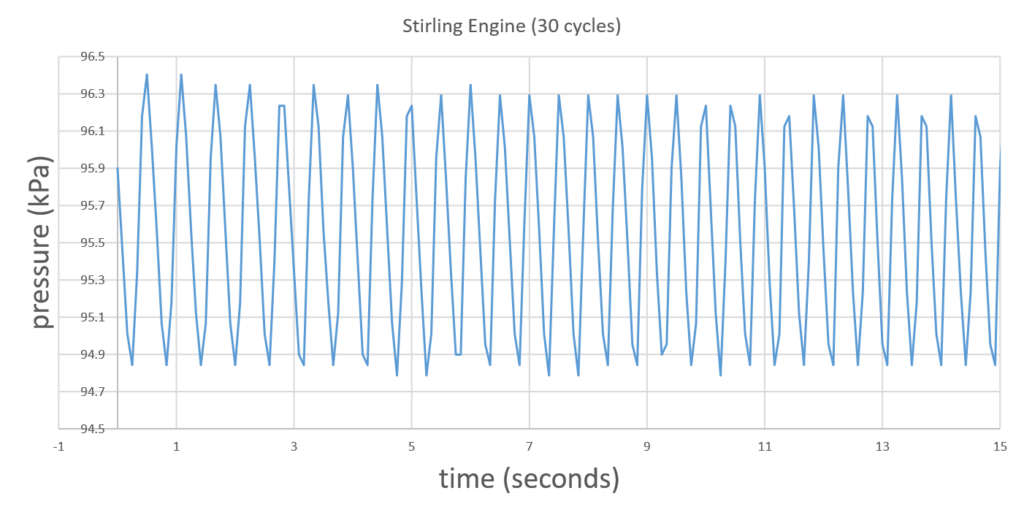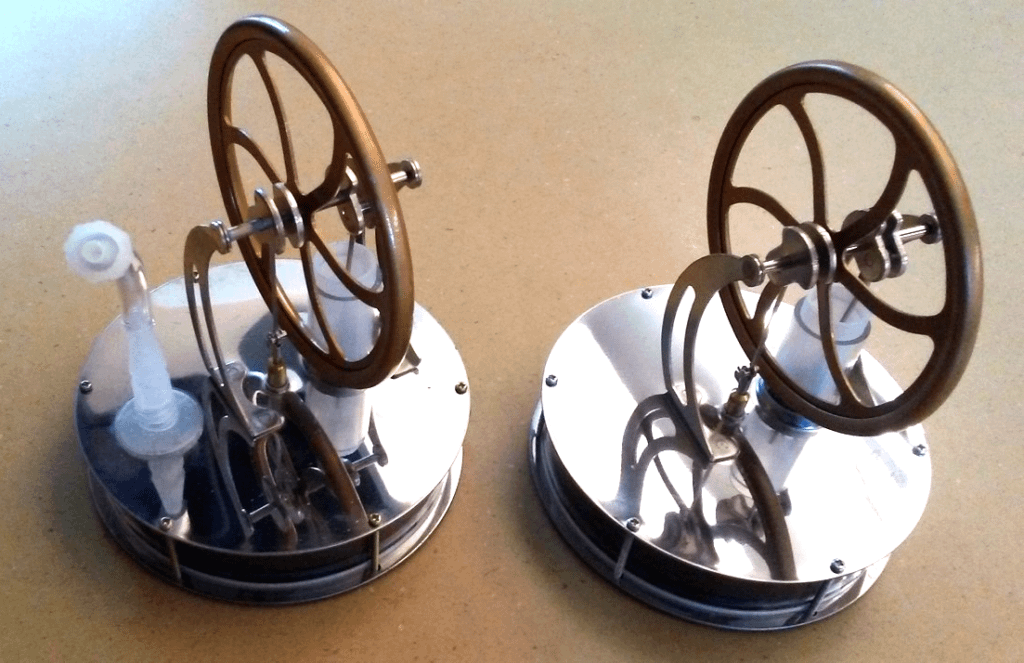Throughout his two-plus decade teaching career, Dr. Richard Stevens has provided his Whitworth University students with the opportunity to participate in hands-on investigations and engage in real-time data collection to validate and reinforce the physics concepts they are learning.
“It can be hard for students to really understand concepts when they are just being explained,” said Dr. Stevens. “Investigations provide a real-world application of a given concept—they give students a visual of what they are learning, as well as an opportunity to collect and analyze data related to that concept.”
“Plus, it makes the learning process and concept interesting.”
Teaching with Stirling Engines
One particularly interesting investigation that Dr. Stevens conducts with his students involves learning about work and power using a Stirling engine, an energy-conversion device that can be used as an engine, a refrigerator, or a heat pump.
“Stirling engines are fairly inexpensive and can operate simply by placing the engine on top of a cup of hot water or coffee,” said Dr. Stevens. “The engine uses the temperature difference between the hot drink and the surrounding air temperature to operate with no electricity required. These are really great and appropriate devices for students to use because of minimal safety concerns.”
To modify the Stirling engine for data collection, Dr. Stevens and his students drill a small hole at the top of the engine, glue on a plastic Luer-lock nipple, and then attach a gas tube connected to a Vernier Gas Pressure Sensor to enable real-time pressure measurements on the engine while it’s running.
“It is amazing to think that the sensor can be used in this way,” said Dr. Stevens. “Students can get surprisingly clean sinusoidal waves, and it is fairly easy to measure the bore and stroke of the cylinder to get the volume change, as well as to calculate the integral of P dV and the work done by the engine over each cycle.”
If more specific phase information is desired, a Vernier Rotary Motion Sensor can be used along with two 3D-printed gears to track the phase of the engine.
“The engine gives students a physical model and visualization to work with as they make the calculations and learn these important concepts,” Dr. Stevens continued.

Engaging More Students
The Stirling engine investigation, which was created by Dr. Stevens, Dr. Karen Stevens, and students Ryan Grady and Laura Stricker, has been used by dozens of students in an upper-level course. However, Dr. Stevens plans to incorporate it into lower-level labs this coming year.
“I think it is always good to start investigations such as this with older students and then move to the lower levels,” said Dr. Stevens. “This provides an opportunity to get students’ feedback and make procedural iterations as needed. This project, in particular, has been in the works and continually adjusted over the last two years.”
“Now we are at a point where we’ll be able to introduce the project to more than 150 lower-level students,” added Dr. Stevens. “We also plan to use the Go Direct® version of the gas pressure sensor and use Vernier Graphical Analysis™ Pro to analyze the data collected.”
“Data-collection technology is continually advancing,” said Dr. Stevens. “I started my teaching career with five LabPro® set-ups and the collection has just grown over time. I can’t remember a time not using Vernier as part of my instruction here at Whitworth.”

About the Educator
Dr. Richard Stevens
Whitworth University
Spokane, WA
Dr. Richard Stevens is a professor in the engineering and physics department at Whitworth University, a small nationally ranked liberal arts college in eastern Washington. Dr. Stevens has taught at the university for 24 years.

